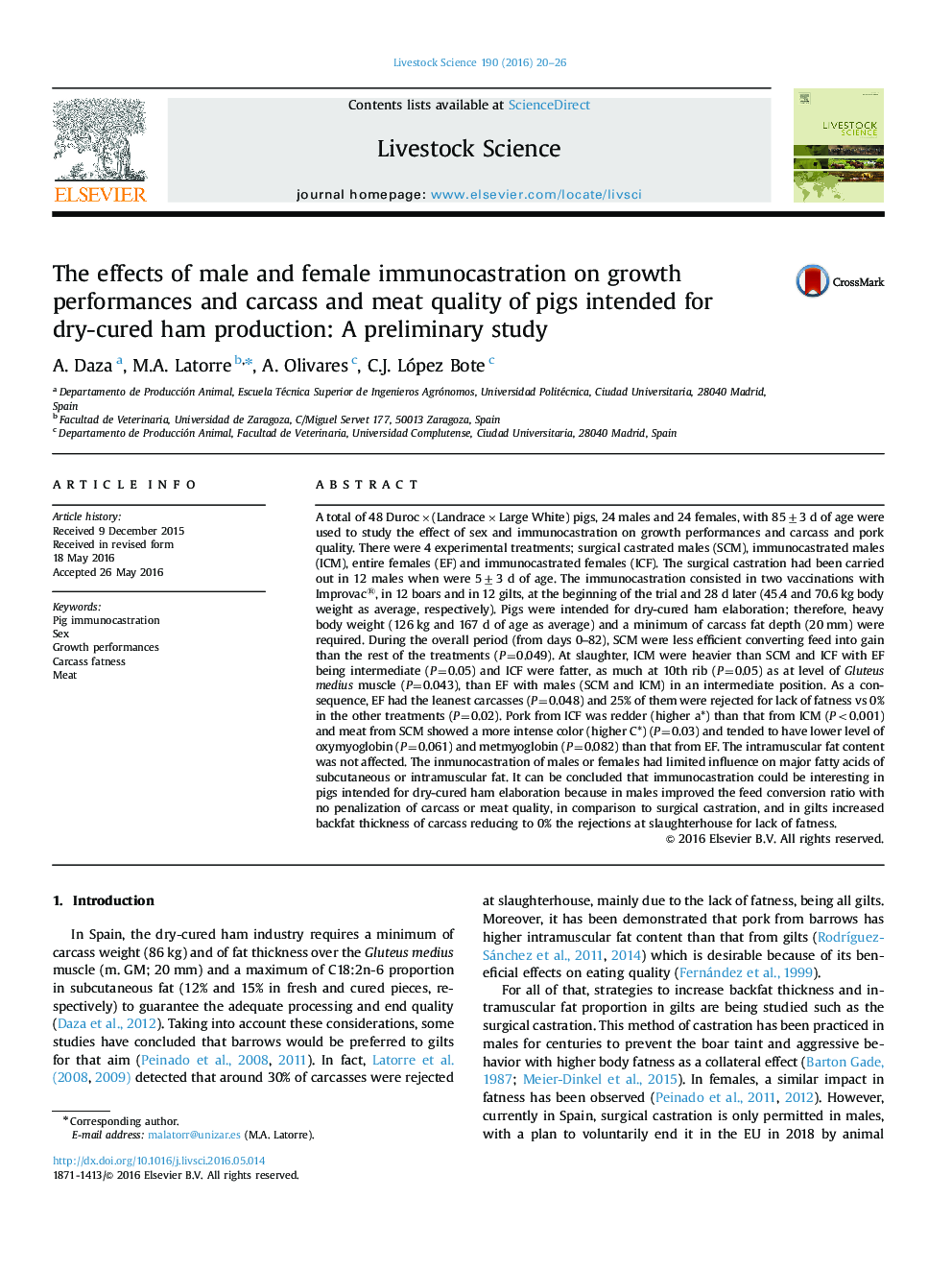| کد مقاله | کد نشریه | سال انتشار | مقاله انگلیسی | نسخه تمام متن |
|---|---|---|---|---|
| 2446877 | 1553942 | 2016 | 7 صفحه PDF | دانلود رایگان |
• For dry-cured ham production, heavy pigs with at least 20 mm of backfat depth are required.
• Currently, males are surgically castrated which will be banned in EU in 2018, and the lack of carcass fatness in gilts carries out many rejections at abattoir.
• Immunization against GnRH might be a solution in both cases.
• In males, immunocastration improved feed efficiency with no impairment of end quality.
• In gilts, immunocastration increased carcass backfat depth reducing the rejections.
A total of 48 Duroc×(Landrace×Large White) pigs, 24 males and 24 females, with 85±3 d of age were used to study the effect of sex and immunocastration on growth performances and carcass and pork quality. There were 4 experimental treatments; surgical castrated males (SCM), immunocastrated males (ICM), entire females (EF) and immunocastrated females (ICF). The surgical castration had been carried out in 12 males when were 5±3 d of age. The immunocastration consisted in two vaccinations with Improvac®, in 12 boars and in 12 gilts, at the beginning of the trial and 28 d later (45.4 and 70.6 kg body weight as average, respectively). Pigs were intended for dry-cured ham elaboration; therefore, heavy body weight (126 kg and 167 d of age as average) and a minimum of carcass fat depth (20 mm) were required. During the overall period (from days 0–82), SCM were less efficient converting feed into gain than the rest of the treatments (P=0.049). At slaughter, ICM were heavier than SCM and ICF with EF being intermediate (P=0.05) and ICF were fatter, as much at 10th rib (P=0.05) as at level of Gluteus medius muscle (P=0.043), than EF with males (SCM and ICM) in an intermediate position. As a consequence, EF had the leanest carcasses (P=0.048) and 25% of them were rejected for lack of fatness vs 0% in the other treatments (P=0.02). Pork from ICF was redder (higher a*) than that from ICM (P<0.001) and meat from SCM showed a more intense color (higher C*) (P=0.03) and tended to have lower level of oxymyoglobin (P=0.061) and metmyoglobin (P=0.082) than that from EF. The intramuscular fat content was not affected. The inmunocastration of males or females had limited influence on major fatty acids of subcutaneous or intramuscular fat. It can be concluded that immunocastration could be interesting in pigs intended for dry-cured ham elaboration because in males improved the feed conversion ratio with no penalization of carcass or meat quality, in comparison to surgical castration, and in gilts increased backfat thickness of carcass reducing to 0% the rejections at slaughterhouse for lack of fatness.
Journal: Livestock Science - Volume 190, August 2016, Pages 20–26
